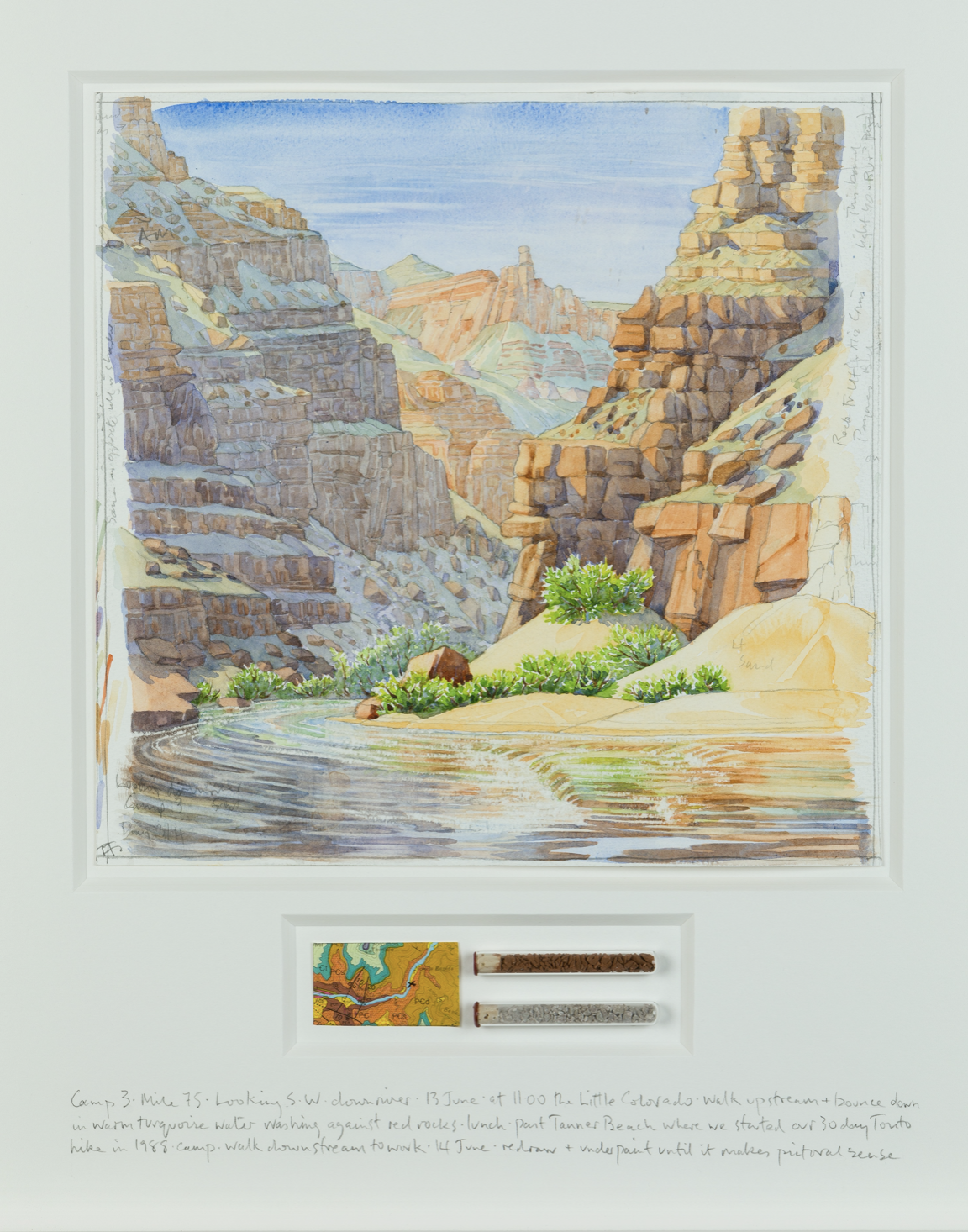
Courtesy of the Foster Art & Wilderness Foundation
Tony Foster, a watercolor artist from Cornwall, England, has traveled the world for over 35 years, painting wilderness landscapes in works that can span several feet. His paintings have taken him from the Himalayas to Death Valley. Friday at 12 p.m, Foster will speak with Duncan Robinson, former director of the Yale Center for British Art, as part of YCBA’s “at home: Artists in Conversation” series.
“It was a wonderful moment,” Robinson said, describing the first time he saw one of Foster’s paintings. “I was absolutely amazed when I saw the contents of that tube, as he unrolled the watercolor paper on the floor of my office in New Haven.”
Over the years, Foster and Robinson have formed a long lasting friendship. In 1984, Robinson offered Foster the opportunity to display his first exhibition in the United States at the YCBA. The following year, Foster displayed his journey called “Thoreau’s Country: Walks and Canoe Journeys in New England,” in which he explored the region that was home to his philosophical hero, Henry David Thoreau.
From that day on, Robinson has closely followed Foster’s career, calling himself his “armchair traveler.” The two have kept in contact over the decades, and Robinson has spoken with and written about the artist on several occasions.
Foster began his career as a pop artist, but transitioned to watercolor paintings to explore his passion for the outdoors. He embarked on his first journey to Southern France in 1982. Since then, Foster has made 17 expeditions, or “journeys,” as he refers to them — each with a dedicated theme in mind.
“Even though Foster depicts nature accurately, there’s a fantasy-like, mystical quality to his work that sparkles with light, elevating it above photographs,” said Adam Van Doren, professor of an undergraduate course called Mastering the Art of Watercolor. “If you go to some of these places, you might be disappointed because they’re not as beautiful as his paintings.”
Each theme — which emerges over time or in a flash of inspiration — defines the sites Foster travels to. For example, from 1996 to 1997, Foster travelled to Hawaii and California. He visited the Andes and Cascades mountain ranges, to paint active volcanoes for a journey titled “Ice and Fire: Watercolour Diaries of Volcano Journeys.” For another journey, titled “Exploring Beauty: Watercolour Diaries from the Wild,” Foster took suggestions from experts in different fields, including writers, plant biologists, astronomers and environmental campaigners to determine the sites.
Foster’s collections are called “watercolor diaries,” as his works extend beyond the scope of the medium, incorporating written notes and souvenirs that he encounters on his journeys.
“Foster’s paintings are visual records made on the spot — sometimes in the midst of pretty dreadful weather conditions, like the occasional howling blizzard or drenching rainfall — but always from a carefully selected point of view,” said Elisabeth Fairman, the chief curator of rare books and manuscripts at the YCBA.
Fairman added that she has visited Foster’s studio in Cornwall and seen his “cabinet of curiosities,” — items Foster has picked up on journeys. According to Fairman, Foster records the day’s events in tiny red memorandum books. Sometimes, these writings appear within the artworks. She said these written accounts are just as “carefully rendered” as his paintings.
Each journey typically involves days of traveling through the rugged wilderness, with Foster carrying a small box of watercolors “about the size of a packet of cigarettes,” a makeshift tupperware-lid palette and brushes. Foster said he usually travels with a few companions and friends. Upon reaching the site and scouting a specific scene to paint, he stays there for a few days to create his paintings, all while camping.
“I’ve worked out that if I add together all the nights I’ve slept in my North Face tadpole tent, I reckon it adds up to seven or eight years,” Foster said. “I can’t pretend that it’s the most comfortable thing in the world, but it does put you in touch with things that you would otherwise never see.”
Another layer to Foster’s work is his dedication to the preservation of the wilderness against climate change and human intervention. Foster said above all, he seeks to convey the extraordinary beauty and value of these places as something that humans should conserve.
Foster’s most recent work is unlike anything he has created during his career, since it was the product of a COVID-19 lockdown. For 56 days during the pandemic, Foster visited different locations within a three-mile radius of his house every day, and painted and wrote about local flowers, plants, and animals. This compilation is called “Lockdown Diary-56 Days.”
“He’s a globetrotter who suddenly couldn’t trot the globe,” Robinson said. “His Lockdown Diary is truly a reflection of how he was able to overcome the restrictions and turn what most of us find deeply frustrating into an exercise in creativity.”
YCBA opened to the public in 1977.
Veronica Lee | veronica.lee@yale.edu







